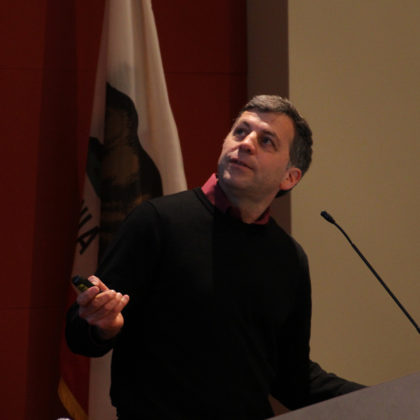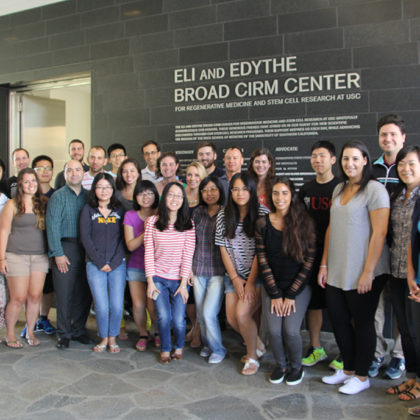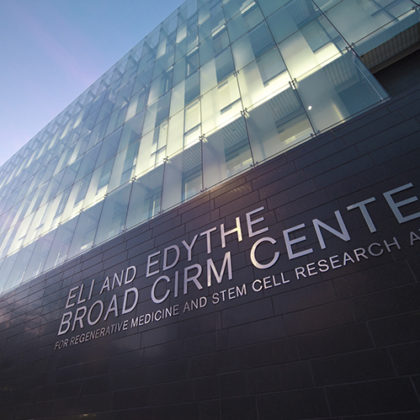New stem cell course brings together science and fiction
Video by Alric Devotta USC will be offering a new two-unit class next spring, MEDS 380 Stem Cells: Fact and Fiction, which will explore contemporary topics in stem cell biology and innovative …
How a single genetic change causes retinal tumors in children
Retinoblastoma is a retinal tumor usually affecting children one to two years of age. Although rare, it is the most common malignant tumor of the eye in children. Left untreated, retinoblastoma can …
Zea Borok elected to American Association of Physicians
Zea Borok, MD, USC Stem Cell principal investigator and professor of medicine and of biochemistry and molecular biology at the Keck School of Medicine of USC, has been elected to membership in …
USC researchers reveal how gene expression affects facial expressions
A person’s face is the first thing that others see, and much remains unknown about how it forms — or malforms — during early development. Recently, Chong Pyo Choe, a senior postdoctoral fellow working …
USC researchers discover the healing power of “rib tickling”
Unlike salamanders, mammals can’t regenerate lost limbs, but they can repair large sections of their ribs. In a new study in the Journal of Bone and Mineral Research, a team directed by …
USC welcomes its inaugural class of stem cell master’s students
USC welcomed its inaugural class of master’s students in stem cell biology and regenerative medicine to one of the first programs of its kind in the United States. To celebrate the launch …
Roberta Diaz Brinton honored as Woman of the Year by Los Angeles Magazine
Los Angeles Magazine has named Roberta Diaz Brinton its Woman of the Year for her revelatory research to combat Alzheimer’s disease. Brinton, executive committee member of USC Stem Cell and holder of …
USC and CIRM celebrate Stem Cell Awareness Day
Please join USC and the California Institute for Regenerative Medicine (CIRM) in celebrating Stem Cell Awareness Day on October 8, 2014 from 4 to 6 p.m. in the lobby of the Eli …
Megan McCain and colleagues make MIT list of 35 Innovators Under 35
The annual MIT Technology Review list of 35 Innovators Under 35 includes three USC Viterbi School of Engineering faculty members — including Megan McCain, principal investigator with USC Stem Cell. Professors McCain and …
USC stem cell PhD students present their blueprints for rebuilding the body
Video by Alric Devotta The students in the new PhD program in Development, Stem Cells, and Regenerative Medicine recently presented some ideas that would give Dr. Frankenstein a run for his money. …
USC offers a summer of stem cells for local high school students
Twenty-three local high school students spent their summer vacations in a very unusual place: the Eli and Edythe Broad CIRM Center for Regenerative Medicine and Stem Cell Research at USC. This August, …
Request for proposals: Eli and Edythe Broad Innovation Award 2015–2016
A recent gift from the Eli and Edythe Broad Foundation established the Eli and Edythe Broad Innovation Awards at USC. An annual research grant of $120,000 will be awarded to one innovative, …
NIH grant provides “ear training” for the next generation of neuroscientists
If you want to know why hearing and communication neuroscience matters, meet Richard Reed. A musician who lost his hearing for nearly a decade, Reed received a cochlear implant and successfully continued his career as a professional pianist and organist. He will be speaking and performing at 4 p.m. on August 22 on the University Park Campus to celebrate the start of the academic year and the renewal of the Hearing & Communication Neuroscience (HCN) training grant at USC.
USC, UCLA and UCSF put their heads together to find stem cell-based cures for craniofacial defects
One in every 2,000 babies is born with a skull that can’t grow normally. Various sections of these babies’ skulls are fused together at joints called sutures, constricting the developing brain and …
PIBBS boasts stellar new class of students
Lured to USC by the Programs in Biomedical and Biological Sciences (PIBBS) — the gateway into PhD programs in biomedical and biological sciences — 30 new PhD students will call the Health …
USC Stem Cell scientists lay a TRAP for disease
USC Stem Cell scientists have set a “mouse TRAP” to capture the early signs of kidney failure, as described by a recent study published in the Journal of Clinical Investigation. Their new …
Min Yu targets the “seeds” of breast cancer metastasis
For breast cancer patients, the era of personalized medicine may be just around the corner, thanks to recent advances by USC Stem Cell researcher Min Yu and scientists at Massachusetts General Hospital …
USC Stem Cell and the USC Norris Comprehensive Cancer Center accelerate drug discovery
Three teams of USC stem cell researchers have won a coveted prize — the opportunity to test 3,000 drug candidates or chemicals for the potential to help patients. Two teams will focus …
Andy McMahon and USC Stem Cell: From discoveries to cures
Video by Little Pictures How do fingers become fingers and not toes? How does the brain generate the correct number of neurons? How do the kidneys branch into the complex and elegant …


















